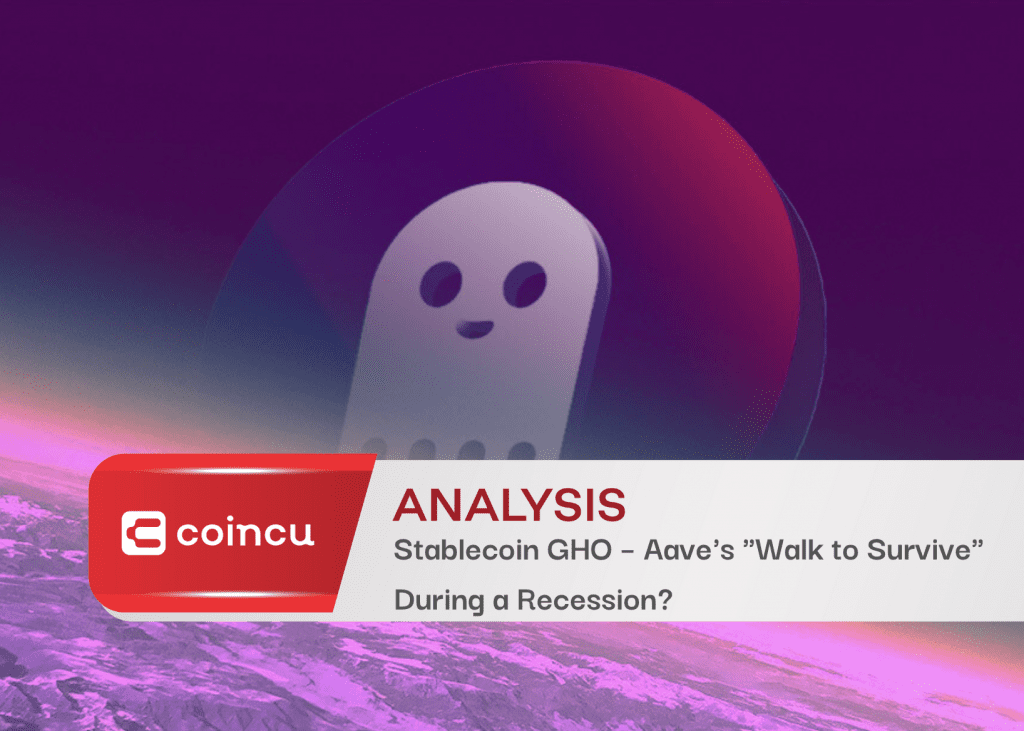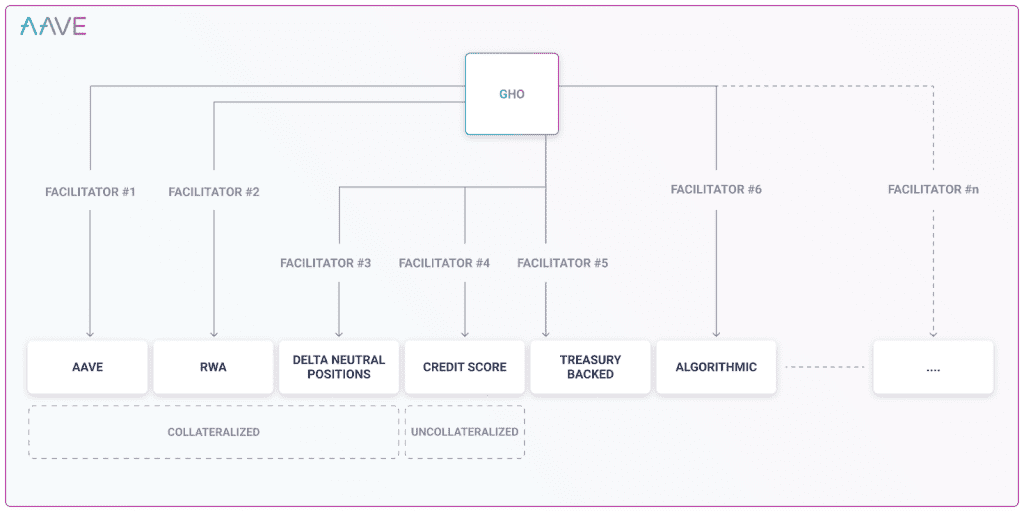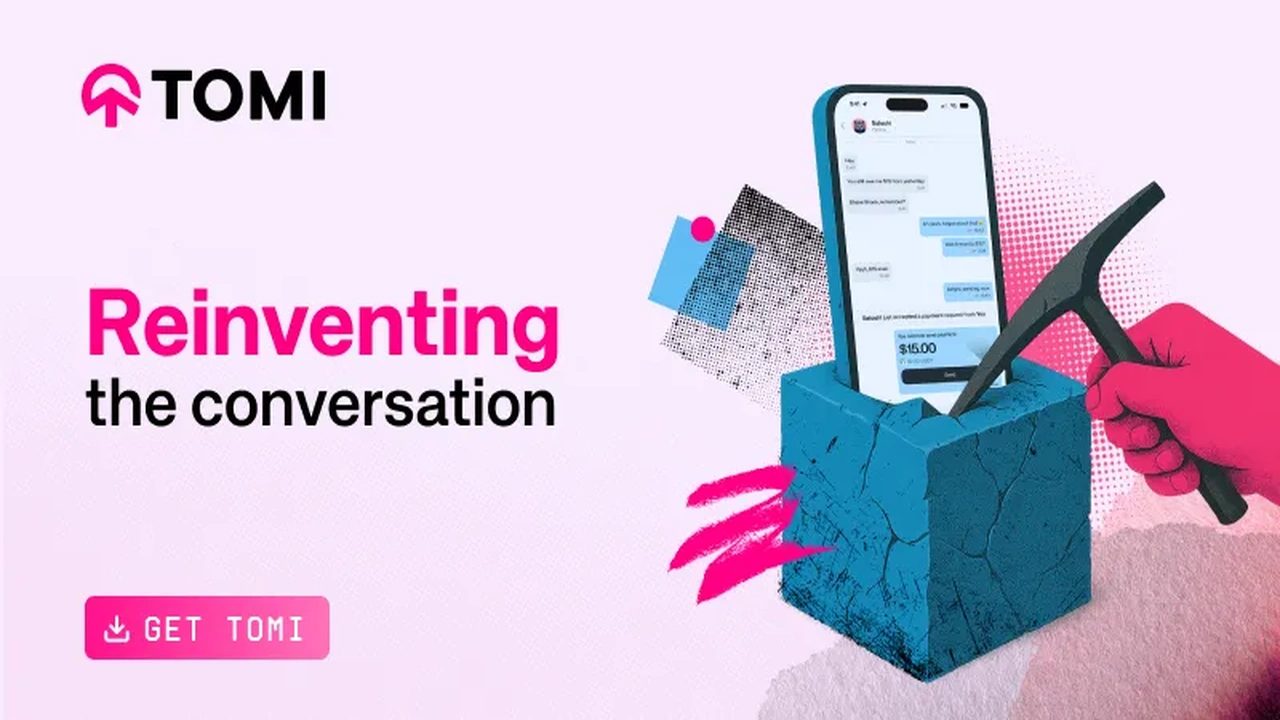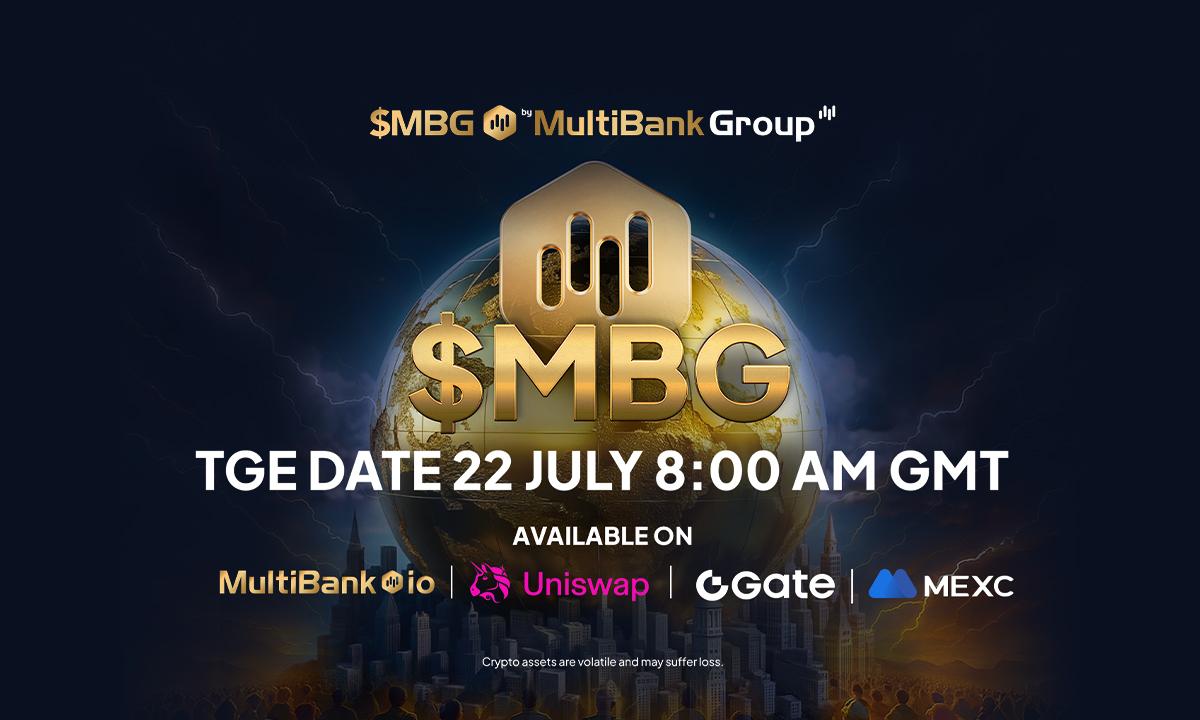Recently, Aave (AAVE) has announced the launch of a new product: stablecoin GHO. According to the project, this product is still waiting for a vote from the DAO, but is essentially “built”. In today’s article, we will learn about the design and working mechanism of GHO.

General Introduction
According to Aave, GHO is a decentralized, fully-secured (100%) stablecoin, derived from AAVE, and collateralized by multiple assets (various asset classes).
How GHO Works
GHO is created by users (aka borrowers) by pledging assets to the protocol and “mint” (borrowing) a certain amount of stablecoin GHO. The ratio between the collateral and the loan will be designed to secure the protocol. When loan repayment (active) or liquidation (passive, due to the unsecured collateral rate), the user’s GHO will be “burned”, receiving collateral.

In addition, Aave also introduces a new concept: Facilitator (three translations: loan promoter). Facilitator is a person who has the ability to participate in lending/repaying loans through GHO. Each Facilitator will have its own strategy to lend or burn GHO (as shown in the picture above, you can see that Facilitator #1 works through AAVE, while #2 via RWA, #4 is from credit score. use…)
Facilitator will be approved by Aave’s DAO . Based on the lending and loan recovery mechanism, Aave’s DAO will approve a certain amount of GHO that Facilitator is allowed to lend. For example, Facilitators that lend under the credit scoring mechanism will be able to “disburse” the loan with a smaller amount.
Interest Rate: The interest rate will be decided by the AAVE DAO, which can be adjusted according to market fluctuations.
Discount mechanism: AAVE allows stkAAVE holders in the wallet to receive a discount (ranging from 0 – 100%) when borrowing, the discount % will be decided by the AAVE DAO.

Turnover
With GHO, Aave expects to generate a large amount of revenue and put it into the DAO Treasury. This revenue increase is used to support the project’s continued growth, especially during a market downturn, as well as to support the community and governance participants.
In addition, AAVE staking participants will receive stkAAVE. As I mentioned above, stkAAVE allows you to borrow GHO at a discount rate, ie with a lower interest rate.
Thus, through GHO, AAVE holders will have two more ways to earn new profits: join the admin DAO or staking AAVE to get a loan with a lower interest rate.
Strategies to Bring GHO Into The Market
To make GHO more popular in the market and used by more people, AAVE strategically uses incentives, grants and hackathons, as well as through low-cost Layer-2s to create habits for users.
Review And Evaluation
In essence, the model of stablecoin GHO is similar to that of stablecoin DAI issued by Maker, i.e. users will mortgage assets to borrow GHO. Changing interest rates, approving Facilitators or deciding to use fees will be decided by Aave DAO.
With the above operating model, GHO will have the characteristics of being decentralized, fully secured, and secured by multiple assets.
However, the new point of GHO is that it not only allows stablecoins to operate based on the aforementioned borrowing and lending mechanism but also can authorize Facilitators to “customize” the strategy. This will be a novelty, as well as a risk. To control the safety of the GHO, the AAVE DAO plays a very important role in the Facilitator approval process as well as the GHO loan limit of that Facilitator.
GHO is a product that shows that the Aave team is still working hard to grow during a market downturn. The orientation of putting fees collected from GHO into Treasury DAO has shown Aave’s desire to have more money to maintain and develop the project. However, in essence, the aforementioned money will be used at the discretion of the Aave DAO, ie the decision of the team and some whales and investment funds (who hold a lot of AAVE). Therefore, we need to monitor the use of this money by the AAVE team.
In addition, according to GHO’s operating model, we will have a bull case for AAVE token: GHO is used more => fees collected => AAVE staker and AAVE holders participate in shared governance a higher share of revenue => the need to buy and hoard AAVE.
As such, what we need to do will be to take care of the development of GHO as well as use the fees collected to consider the benefits of holding AAVE.
Verdict
As a multi-chain development protocol, AAVE will have quite a few advantages when implementing GHO in bulk. However, stablecoin is currently a niche with quite a few big competitors, whether GHO can develop and capture market share no longer needs time to prove. What is your opinion about this move of AAVE? Leave a comment to discuss with us!
If you have any questions, comments, suggestions, or ideas about the project, please email ventures@coincu.com.
DISCLAIMER: The Information on this website is provided as general market commentary and does not constitute investment advice. We encourage you to do your research before investing.
Join CoinCu Telegram to keep track of news: https://t.me/coincunews
Follow CoinCu Youtube Channel | Follow CoinCu Facebook page
Marcus
Coincu Venture























